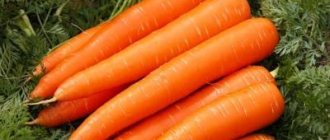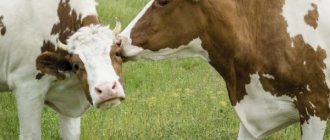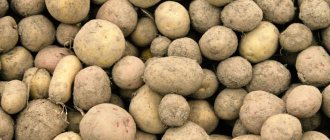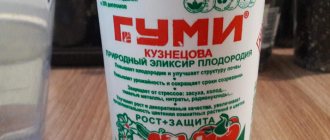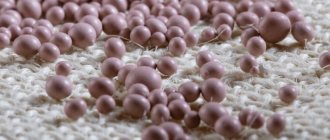published: 18. 12 . 2019
author: Vitaly Shibarshin
From this article you will learn:
- Why do calfs need vitamins and minerals?
- How supplements affect the growth of calves
- What types of calf growth supplements are most commonly used?
- How to Incorporate Calf Growth Supplements into Your Diet
- How to feed a calf during the day
For proper growth, development and weight gain, calves need a carefully selected and balanced diet. In most cases, it will not be possible to do without special additives that contribute to the proper development of each calf, increasing the weight and quality of the resulting milk. From the article you will learn about why young animals need vitamins and minerals and what growth supplements are best for calves.
What is needed for calves to grow?
Proper development of a calf is impossible if it feeds only on mother's milk; its diet must contain vitamin supplements, in particular vitamins A and D. To preserve the substances necessary for growing animals, it is important to follow the rules for preparing and storing hay. After all, it is the direct source of numerous beneficial elements that should be present in a balanced daily diet for livestock.
Any feed should contain sufficient amounts of vitamins A and D. Only in this case will it be possible to talk about the constant and stable development of each calf in the herd. Vitamin A is necessary to stimulate the growth of the entire livestock, increasing the resistance of the immune system to pathogens of dangerous infectious and other diseases. Vitamin D deficiency can trigger the development of painful and severe rickets.
Signs of vitamin deficiency
Vitamin deficiency in young animals leads to a number of problems. A lack of vitamin A affects the development of the calf and its weight gain. Its deficiency causes eye diseases such as conjunctivitis, night blindness and much more. But not only the external mucous membranes are affected; inflammation of the digestive tract is also possible.
An insufficient amount of vitamin E causes dystrophy of the heart and bone muscles, problems with the nervous system, as well as impaired fertility due to dysfunction of the gonads.
Vitamin D deficiency leads to impaired bone growth, a disease such as rickets. The calf's weight gain decreases, development slows down, and activity decreases. The structure of the rib bones changes, which leads to severe ailments.
Rickets in a calf
Vitamin B deficiency is also characterized by growth retardation due to nervous system failure, which causes violent behavior and paralysis. Moreover, the calf's coat may thin out and skin ulcers may develop.
Direct sources of trace elements for calf growth
For newborn calves, the main source of nutrients entering the body is mother's milk. Milk fat is rich in all necessary vitamins, macro- and microelements. Over time, the needs of a growing organism increase, and therefore there is a need for active supplementary feeding of the cubs. At this point, supplements may be required along with the basic diet. The main source of vitamin A for calves is young and sweet carrots, rich in beneficial carotene.
Large amounts of carotene (converted into vitamin A in the body) are found in hay made from young grasses. However, to preserve their beneficial properties, the greens should be dried in the shade.
Vitamin D is synthesized by the body independently under the influence of sunlight, for example, when a herd grazes in a meadow. Particularly useful and nutritious is clover or alfalfa hay, dried in dry and fairly clear weather. To provide the calf with all the useful and varied substances necessary for active growth, make sure that its diet contains high-quality hay, juicy carrots and young green grass. These simple tips will help prevent vitamin deficiency.
Keep in mind that rutabaga and sweet fodder beets do not contain vitamins that are essential for the growth and development of calves. However, their absence does not reduce the nutritional value of these products. It is enough, in addition to these root vegetables, to give the calves sweet red carrots.
The rapidly growing body of calves needs not only vitamins, but also minerals. First of all, we are talking about potassium and phosphorus. To replenish the supply of minerals, on the fifth day it is recommended to add hay to the usual “milk” diet of calves.
However, in some cases, vitamin and mineral supplements are required for the growth of the cubs. Bone meal is rich in essential substances, first of all. Second place goes to chalk, which, unlike bone meal, does not contain phosphorus at all. An excellent addition to the daily diet of calves is a mixture containing chalk, bone meal and salt.
What are vitamins for cattle, and what are they?
Modern veterinary pharmacology offers biologically active additives to animal food in the form of injections. They are divided into two groups:
- activators of metabolism and internal resources of the animal’s body;
- External anabolic steroids that cause muscle mass to grow without affecting the internal processes of the body.
The result for both drugs is the same - milk yield, the percentage of meat, and the volume of internal organs that are valuable to the consumer increase. But in the first case, the finished product is safe for the health of the animal and the consumer, and in the second case, it can provoke pathological processes in the human body who eats the meat of a “stabbed animal.” And for the livestock themselves, drugs of the second group are unsafe and can be fatal. And all because the drugs of the 2nd group are steroids (hormonal), which take on the functions of hormones, which helps stop their production by the body.
Supplements for calf growth
Supplements for the growth of calves are developed by specialists and consist of special complexes that restore the vitamin balance in the body. Feeding helps the cubs grow strong and healthy. Supplements have a positive effect on the overall well-being of calves, and also help strengthen the immune system and bone tissue, and improve muscle function.
Growth supplements can be given to calves from three weeks of age. Since the modern market offers a wide selection of vitamin supplements, it is worth consulting a veterinarian before making a choice in favor of one or another drug.
Only a specialist can tell about the lack of specific vitamins, minerals and microelements, and he will also give recommendations on their selection. However, all high-quality supplements for the growth of calves must contain elements such as potassium, cobalt, iodine and other macroelements.
Advantages and disadvantages of raising bulls for meat at home
Premixes developed by specialists have a significant positive effect on fattening animals and gaining muscle mass. This is exactly what the “Superpremix” additive belongs to. They give it at the rate of 150 grams per animal. As for the exact quantity, here you need to know the weight, age group of the calves and look at the detailed instructions provided with the drug.
The additive is suitable for both large livestock complexes and home farms. It contains mineral and vitamin supplements, a stimulant that affects growth, as well as a fragrance that promotes better feed consumption.
With regular use, animals experience a good gain of muscle mass, and at the same time, the fattening period itself is reduced by 42 days. In addition, less feed is consumed, which is very beneficial for the farm owner. And if under normal conditions approximately a ton of feed is consumed per bull, then in this case it is reduced to 800 kg.
“Superpremix” does not contain harmful substances that have a negative impact on the health of young animals. To obtain marbled meat, the additive is fed before slaughter.
Feed additives
Most feed additives are developed for specific breeds. Such feed will be harmful to ordinary cows or cows of other breeds.
There are a number of supplements suitable for everyone. These are the vitamin supplement “Prestarter”, the feed additive “Supermix” and the biostimulant “Krezacin”.
"Prestarter" is indispensable in the initial stages of feeding. Farmers give it to calves under 10 months of age. Afterwards, predominantly natural feed is used.
The food contains flaxseeds, cake, whole grains, milk powder and a set of sugars. The product triggers the natural mechanism of weight gain.
“Krezacin” is added to water starting from six months of age. Aggressive feeding regimens are stressful because they place increased stress on the neck, bones, muscles, heart and kidneys.
To ensure that the farmer’s efforts are not wasted, constant artificial support of the body is required with the help of supplements. This stimulant does not affect the quality of meat in any way, is produced in Russia and is not dangerous to humans.
When fattening, it is important to strictly maintain the animal’s diet. To increase appetite, “Supermix” is added to the feed. It quietly affects the digestive organs, accelerating metabolism and weight gain.
The advantage of raising bulls for meat is a good profit. But at home it is difficult to find good pasture, and keeping them in a stall significantly increases the final cost of meat.
Therefore, for this type of income you will need quite significant financial investments.
With a lack of group A vitamins for calves, mucus and pus begin to flow from the animal’s nose and eyes, vision decreases, and the intestines begin to function poorly. If the body does not receive enough vitamin D, then soon you may notice deformation of the animal’s limbs. Weakness appears in the animal's body, bones become brittle, which can lead to fractures.
Main Types of Supplements for Calf Growth
There is a conditional division of additives for the rapid growth of calves in accordance with the tasks assigned to them.
Premixes have a positive effect on fattening calves and gaining muscle mass. This additive is introduced into the diet of animals in accordance with the weight and age of each individual. You can familiarize yourself with the exact rates of administration of premixes in the instructions for the drugs.
Regular use of premixes stimulates accelerated muscle mass gain and significantly shortens the fattening period of young animals. Among the advantages of this type of additive for calf growth is a reduction in feed consumption, which is very beneficial for farm owners.
Antibiotics . To gain more weight from animals, antibiotics are often used during the fattening process. Their use for 30 days leads to an increase in the weight of livestock by up to 5%. Ninety days of use increases this figure to 15%, and the result continues to persist for the next six months, after which it declines. When calves reach one year of age, the difference in weight gain does not exceed 8%.
Experts express different opinions regarding the methods of introducing antibiotics into the diet of animals. However, during research it was found that adding them to feed is more effective in comparison with intramuscular injections and oral administration.
If you decide to resort to injections, keep in mind that the injections are given twice a day. In this case, streptomycin or penicillin is used as a growth supplement for calves. Correct calculation of the dosage will affect the rapid increase in size of young animals and an increase in their appetite. In this case, you can switch to complementary feeding with hay starting from the age of five months.
Prebiotics are essential for increasing growth rate, improving immunity, good digestive system function and development of the proventriculus. Prebiotics are introduced into the diet of calves from the fourth day of life. Over the next 2.5 weeks, until the calves reach 21 days of age, the drugs are mixed into the milk and fed to the cattle.
A number of farm owners use biostimulants , which reduce fattening time by stimulating the appetite of young animals. The use of such supplements allows you to increase your daily weight gain by about 15%. It should be borne in mind that biostimulants can only be used when the cubs reach the age of six months. For the most part, these drugs are harmless and do not accumulate in the body. Such additives for growth of calves are highly soluble and can be introduced into the diet with feed or drinking water.
Cereal additives. Excellent feed additives for the growth of calves, especially bulls, are cereal and legume diets. Such nutrition leads to soft, tender meat products, since young animals eat green mass, rich in fiber and vitamins. The diet ensures intensive rearing and good weight gain in young livestock.
Read also: Maternity paresis of cows: signs of the disease, its treatment and prevention
Artificial growth stimulants
Today, many farmers use such drugs from 21 days after the birth of a calf. Thanks to them, the desired result is achieved many times faster. If you do everything according to the instructions, then side effects can be avoided.
Gamavit
Such products have antibiotic properties, and therefore the occurrence of various diseases in the herd as a whole is noticeably reduced. If we talk about the advantages of growth stimulants, which can be either hormonal or not, they are as follows:
- instant development of the animal;
- calves switch to feeding on hay faster;
- increased appetite;
- better recovery of the body after illness.
Worth knowing. Several types of feed additives can be given at once. However, this practice is rarely resorted to for economic reasons. The combined use of both natural and artificial drugs significantly increases the cost of production.
If antibiotics are added to feed, there are a number of risks. With prolonged and uncontrolled use, diseases of the stomach, heart, and liver develop. Before using such products, it is recommended to obtain permission from a veterinarian, who will be able to prescribe the exact dose for both young animals and adults.
Fosprenil
In the following table you can familiarize yourself with the features of some products of synthetic origin.
| Name of the drug | Dose ml per kg body weight | Side effects if overdose occurs |
| Fosprenil | 0,6-0,8 | Cannot be used with steroids, exceeding the dose causes lethargy and changes in temperature |
| Katozal | 0,5-0,25 | No |
| Gamavit | 0,3-0,5 | No |
| Roborante | 0,5-25 | No |
Accelerated growth of calves on milk replacer
In some cases, young animals under the age of 2.5-3 months are fed with special mixtures - substitutes for whole milk. It is this age that is characterized by the most active growth and development of the calf. His body weight increases three and sometimes four times compared to his existing body weight. Of course, such a sharp increase is impossible if the diet lacks sufficient amounts of protein, carbohydrates, fats, vitamins and minerals. All these elements are present in milk in optimal proportions.
However, if we are talking about farms focused on dairy production, then feeding young animals with milk is quite expensive. A large number of calves can lead to significant unprofitability of the farm. In such situations, a calf growth supplement called whole milk replacer is used. Its cost is significantly lower than that of full-fledged milk, but its nutritional properties are similar.
There are several types of whole milk substitutes:
- Dry mixtures are a homogeneous crumbly mass resembling flour. Before use, this calf growth supplement is diluted with water or whey in a ratio of 1:8. Dry powders have the longest shelf life.
- A concentrated substitute is similar to dry powders, but less water is needed to dilute it.
- Liquid mixture. In this case, manufacturers offer a ready-to-use product in which the dry substance is diluted with the required volume of liquid. This additive has the shortest shelf life - no more than a day. In this regard, delivering it to farms is somewhat problematic. However, for some farm owners it is much easier to buy a ready-made additive for the growth of calves, because this significantly simplifies the process of use and eliminates the stage of preparing feed.
Calves can be switched to milk replacers starting from the tenth day of life. In this case, strict adherence to the feeding standards for young animals specified in the instructions for milk replacement is of great importance. Following the recommended dosages will enable you to quickly achieve maximum weight gain and also improve the health of your calves. We also note that both excess and shortage can have equally negative consequences.
When calves reach three months of age, the additive is excluded from the diet, and the young animals are transferred to full feeding. During feeding, each calf receives from 28 to 42 kg of dry powder - a substitute. On average, the nutritional value of 1.1 kg of powder is approximately equal to 10 liters of whole milk.
Basic rules of fattening
Fattening bulls for meat is an opportunity to make a profit from selling beef.
Fattening (especially its aggressive forms) must be done in parallel with vitamin supplements in food
The first thing you need to understand is that the buyer needs meat. The excess fat will be trimmed off by the butcher and sold at a reduced price. If a bull gains weight, this is not a reason to stop adhering to a specially designed diet.
The purpose of fattening is not just to make cattle gain weight, but to build up the meat layer.
Fattening (especially its aggressive forms) must be done in parallel with the addition of vitamins to food. Without the use of special additives, a bull's stomach may fail.
Phosphorus and chalk are also required. These elements strengthen the musculoskeletal system; without them, the skeleton may not be able to withstand rapid weight gain.
To fatten as quickly as possible, you need to limit the animal’s physical activity, even walking or grazing should last a certain amount of time. Another rule: constant availability of clean water. The animal's thirst increases the rate of fat deposition, and ideal meat should have less than 1 mm of fat between the layers of muscle tissue.
To quickly gain weight, calves need the right diet. It is best to get a special journal in which you can record weight gain, as well as this or that feeding technique. Most farmers settle on a three-time food distribution schedule at equal time intervals. And if each owner makes an independent decision about the ingredients, then he adheres to certain rules described in animal science.
From the postpartum period until the 60th day, calves are fed milk, then a supplement of wheat cereal and good quality hay is introduced. This diet promotes rapid growth and eliminates problems with the digestive system.
From 60 to 90 days, preference is given to feeds with a high protein content, which help to gain muscle mass. This includes vegetables and crushed grains. From day 120, the next additive is dried or fresh green mass in the amount of 10 - 15 kg. This norm must be increased every day.
The most optimal period for submitting animals to slaughter is one and a half years of age, but if we take intensive fattening as a basis, then this period will be significantly reduced.
How to dilute dry milk replacers
While ready-made mixtures can be given to calves immediately, dry mixtures require dilution with a certain amount of liquid (water or whey) before serving. In most cases, instructions for use of such compositions are contained on their packaging. However, let us dwell on some of the features of these supplements for the growth of calves, the observance of which is mandatory.
So, in the process of preparing whole milk substitutes, you need to pay attention to the following points:
- the container in which you plan to prepare the mixture must be thoroughly washed, and best of all, scalded with boiling water;
- the dry mass is diluted with water immediately before feeding the calves, since after 10 minutes the nutritional properties of milk replacer begin to rapidly decline;
- to dissolve the additive, it is necessary to use a liquid whose temperature is +50...+60 °C - mix the mixture thoroughly, avoiding the formation of lumps in it;
- before giving the mixture to the calf, cool the additive to +37...+38 °C, that is, to the temperature that is as close as possible to the temperature of cow's milk during natural feeding;
- It is essential to maintain precise dosages of the mixture in accordance with the age of the calves.
The greatest role is played by a certain temperature value of the water or whey that is used to prepare the mixture. If the temperature is below +50 °C, the calf growth additive will not dissolve completely; part of the mixture will remain as sediment at the bottom. An increase in temperature above +60 °C will entail the breakdown of proteins and vitamins, which will negatively affect the nutritional value of the supplement.
Also, preparing the mixture requires strict adherence to the required proportions. If there is not enough powder, the prepared mixture will be too liquid, the calf’s body will perceive it as ordinary water, and therefore it will end up in the rumen. Subsequently, the particles of whole milk substitute that accumulate in the rumen begin to rot, thereby creating ideal conditions for the development of pathogenic microflora.
Selection of young animals for fattening
For the development of calves, not only vitamins are necessary, but also other useful substances that affect the growth activity of animals. Particular attention should be paid to phosphorus, calcium and potassium. If you give your herd high-quality hay and milk, then there will be no shortage of these elements.
Read more: Diseases of calves and treatment description of diseases
But, if calves still begin to experience a deficiency of these substances, then specialized supplements can be used, which are introduced into the animal’s diet. Bone meal is considered beneficial for young animals. However, it is not able to fully satisfy the body's need for all mineral elements. It is best if you prepare a mixture of healthy supplements rather than using just one.
A good option for replenishing the lack of mineral elements in the calves’ body is a mixture of crushed chalk, table salt and bone meal, in proportions of 15:5:10. It is allowed to give to animals from the 5th day of life.
Like and repost the article if you found something useful and relevant to you in it.
You need to choose a bull after several months of life, because the process of gaining weight needs to be started as early as possible. Attention is paid to the legs and neck of the animal.
Healthy individuals already stand firmly on their feet at an early age, turning their necks in search of a cow. They are constantly looking for their portion of milk. This behavior indicates a strong neck and bones.
You need to choose a bull after several months of life
If the bull is not selected from the annual offspring and is purchased only for fattening, then the best month for purchase will be March or April. At this time, animals that were born in winter or late autumn are sold. Such bulls have a strong immune system and are better able to tolerate illness and stay in a stall.
If possible, then you need to take individuals of a certain breed. For such an animal you will have to go to a factory where they produce specific breeds.
Despite the inconvenience, such a purchase provides certain guarantees: the breeder provides a passport of the animal, which confirms its origin and the advantages of the breed. In any other place there is still a possibility of buying a bull of poor quality.
Approximate diet including growth supplements for calves
Today, feeding schemes, starting from the moment the bull is born, can be different. Using different technologies, it is possible to achieve the desired result in a short period of time, while achieving a maximum increase in muscle mass in calves. Following certain standards is of particular importance if marbled beef is required. Using ready-made feeding recommendations compiled by experts as a basis, farm owners can develop their own diet taking into account the available products.
In general, feeding principles differ depending on the season; there is a division of diets into winter and summer. The warm season is characterized by animals consuming mainly green mass, to which concentrates are added. The absence of grass in winter requires its compensation through other components.
An approximate diet in the cold season should consist of:
- hay, it can be replaced with straw, but if possible, preference should be given to the first option;
- root vegetables;
- supplements including probiotics and vitamin complexes;
- dry fodder grass harvested in the summer.
In winter, green mass is replaced with compound feed. When the grazing season begins, the animals are switched to grass, but this process must be gradual, otherwise digestive problems are likely. That is, you will not only not get a positive result, but you can also destroy the young animals.
If we talk directly about food, it is important that they contain only high-quality ingredients. Feeding calves with spoiled foods can lead to digestive disorders and poisoning, which in turn can lead to weakness and an increased likelihood of another disease.
On a day, a young bull needs to consume:
- hay about 3-4 kg;
- 4 kg of root vegetables (if the vegetables are large, it is better to chop them into pieces);
- 2 kg of concentrates for each individual.
As the animals grow and gain weight, the existing diet will need to be adjusted, since the needs of the young animals will change.
Use of grain fodder . The use of special additives for the rapid growth of calves allows fattening beef bulls in a shorter time.
The introduction of crushed grain fodder into the diet with a daily increase in its quantity allows you to achieve excellent weight gain.
| Age group | Feed quantity |
| 60–90 days | No more than 600 g per day |
| 180 days | 3.5 kg per day |
| 365 days | 9 kg per day425 days |
| 425 days | 10–14 kg per day |
Using the proposed scheme makes it possible to achieve a weight gain of up to 500 kg by the age of one year. In accordance with the latest norm, bulls are fed until slaughter. The diet should consist either of grain mixtures, for example, wheat and barley, the ratio of which is 1: 1, or of one type of grain. Keep in mind that with the second option, the weight gain of the bull will be slightly lower. The advantages of using grain fodder include efficiency and economic benefits.
The effect of stimulants on the human body
The use of growth hormones lies in the fact that they have a certain effect on the human body when they get there with meat or dairy products. Antibiotics that do not pose a danger, as well as dietary supplements, are recommended for use, otherwise the products may not pass veterinary control before sale.
It is recommended to purchase stimulants exclusively at specialized retail outlets. Here the products have the necessary certificates and are approved. This significantly reduces the risk of failure to undergo veterinary control.
Even approved products must be stopped feeding or injecting 7-20 days before the planned slaughter date. It all depends on what type of synthetic additives they are. Natural ingredients stop being given a few days before the cattle are sent for slaughter.
We invite you to join our Zen channel and group on VKontakte or Odnoklassniki, where new articles are published, as well as news for gardeners and livestock breeders.
Similar articles:
- Winter grazing season, what do Canadian farmers offer?
- Choosing a milking machine for a cow
- How to artificially water a calf?
The use of growth hormones and natural fertilizers
The goal of any cattle breeder is to raise calves and produce stock that has the desired characteristics. For this reason, young animals must be provided with everything they need from the first days of life. In addition, they are faced with the task of quickly obtaining material profit.
Interestingly, livestock farming is taxed regardless of its income. As a result, farmers have to use all kinds of means to stimulate the growth of livestock. Nowadays various fertilizers are sold for this purpose. But you should choose the right product, taking into account the recommendations of a specialist and the financial capabilities of the farm.
It should be noted that Russian farmers highly value organic products. Therefore, when natural additives are used as growth stimulants, the cost of the resulting meat products increases.
Among the advantages of using drugs to stimulate growth, the following should be noted:
- muscle mass increases;
- the body's resistance to all kinds of pathologies increases;
- a larger number of individuals comply with existing standards, thanks to which it is possible to maintain high-quality livestock;
- the products are safe for people;
- animal productivity increases;
- digestive function is normalized;
- the cows' appetite is activated.
Important! The main advantage is the ability to quickly make a profit after selling meat and milk.
Prebiotics
“Perestarter” contains good recommendations, containing mineral and vitamin supplements, as well as a cellulose prebiotic. Affects growth rate, improves immunity, promotes good functioning of the digestive system, and develops the proventriculus.
Prebiotics begin to be given at four days of age. At first, up to 21 days, the drug is mixed with milk and given to young animals. With the accelerated cultivation option, the use of “Restarter” is recommended for the entire period according to the instructions, so you can get the desired result.
Breed characteristics also influence fattening; some bulls can weigh about 600 kg by the end of the period. Feed is distributed 4 times a day. The main rule is that when adding Prestarter, animals must be provided with access to water.
Additive "Biovit-80"
To understand how vitamin supplements work for calves, you need to know which vitamins are important for the animal's growth. B vitamins play an important role in this process, affecting development, normalization of metabolism and the rate of formation of new cells.
Among all the vitamin supplements that develop cattle and also help maintain their health, the drug “Biovit-80” is popular. It stimulates the growth of young animals and prevents diarrhea. It is for this that the complex is especially valued in the livestock society, since diarrhea is one of the most problematic diseases of calves.
How are biostimulants used?
Today, many livestock owners use Krezacin, which has a significant impact on fattening periods by increasing appetite. If you use such a drug, you can achieve daily weight gain of about 15%.
It is important to know! The use of "Krezacin" is permitted only from six months of age.
"Krezatsin" refers to harmless drugs that do not accumulate in the body. It can be added both to feed and drinking water, where it will completely dissolve. Calculation of the dosage for 1 kg of mass is no more than 0.010 g of biostimulant.
Fattening calves from the first to the sixth month
For the first six months, the basis of the calf’s diet is milk. The main task of this period is to correctly transfer the diet from a milk diet to fattening. In the first month, the calf consumes 8 to 12 liters of milk per day. From the 10th day you need to mix phosphorus (5 g per 1 l) and salt (10 g per 1 l) into the milk.
At two months of age, 200 g of grain, the same amount of hay and root vegetables are added to the daily diet. Instead of grain, you can give steamed porridge. Eating silage at this age is not advisable. The amount of milk is gradually reduced to 4-6 liters per day. The amount of phosphate and salt is doubled.
The first six months of the calf's diet is based on milk.
In the 3rd and 4th months, boiled potatoes are introduced into the diet. The amount of milk remains the same. Towards the end of the period, you can give calves silage (no more than 0.5 kg per day). Any variety will do, but it is better to use corn.
Refusal of milk occurs within 5 months. During this time, silage consumption increases to 20 kg per day. The diet should be increased gradually, 1-2 kg per day, so as not to spoil the animal’s digestive system.
If the animal requires more food, then the portions can be increased by 1.5-2 times a day for 2-3 days in a row. This will be enough for the portions to catch up with the development of the individual, which exceeds the norm.
From 6 to 12 months, the main gain of muscle mass occurs. With the right diet, ordinary calves at this time gain 500-800 g per day.
The weight gain of purebred individuals can reach 1.5 kg. For full development at this age, an animal requires 1.5 kg of hay, 10 kg of straw, 2 kg of feed. This is subject to rearing in stalls. For pasture cows, 7 kg of hay and 2-3 kg of concentrates are distributed for 3-4 meals.
50 g of salt and 40 g of phosphates are used as additives. To be completely sure that the animal is consuming the supplements, they are dissolved in a drinking bowl, which is installed in the stall at night.
Another option: mixing additives with feed. But not every animal will eat such food. In water, the calf will not feel the additive.
Read more: Bronchopneumonia of calves: what it is, how to treat it
At this age, the amount of silage used doubles. You can reduce your hay consumption by 1-2 kg and add haylage to your diet.
The main thing is to monitor the presence of grass in the pasture or the amount of silage in the feeder. If animals are eating too quickly, this will be visible at the feeders and the ration should be increased by adding more hay or grains.
Dinoplus
Hormonal medication based on cloprostenol (synthetic analogue of prostaglandin F2a).
Principle of action: luteolizes the yellow and persistent yellow bodies of the ovaries, normalizes the functioning of the appendages, induces ovulation and starts the estrus process in cows.
Dinoplus is administered subcutaneously or intramuscularly: 2 ml per individual.
To synchronize sexual heat, the same dose of the drug must be repeated after 11 days.
Proline
Due to the active hormonal substance (dinoprost tromethamine), the drug synchronizes the sexual cycle, treats pyometra, chronic metritis and endometritis, and also stimulates calving or gradually interrupts pregnancy.
Treatment regimen: 5 ml per 1 cow intramuscularly for all indications.
In the presence of a persistent body, Proline is administered once, and insemination is carried out after 2-4 days. To synchronize sexual heat, the drug is administered twice 35 days after calving with an interval of 12 days, insemination is carried out 90 hours after the second injection.
Requirements for vitamins of certain categories of cattle
The need for vitamins varies among livestock. Some individuals are in dire need of a specific supplement, while others do not need it at all. And the amount of vitamin needed by a particular individual may vary.
The purpose of livestock can be different. The selection of vitamins should be carried out depending on this.
Pregnant cows
This is the most important category of cattle, which most urgently needs vitamins. The intrauterine development of the calf and the condition of the cow itself directly depend on their wealth. Her bones may become soft, and due to the complete consumption of internal reserves, the body may become depleted.
Newborn calves that do not receive the required amount of nutrients in a timely manner are characterized by weakened health and poor immunity.
The most important vitamins for pregnant cows are A, D, E. The daily dose is calculated in relation to the weight of the cow and the level of productivity that is expected from her after calving. Therefore, shortly before giving birth, the cow needs to be put on an enhanced diet, which will ensure the production of more milk. It is worth adding hay and root vegetables to your daily menu.
If a cow produces more than 3000, but less than 5000 liters of milk per year, and her weight does not exceed 600 kilograms, then the daily dose of vitamin A is set at 30-40. With a productivity of more than 5000 liters, the bar rises to 35-45.
Vitamin D:
- The milk yield level is 3000 liters, the animal’s weight is up to 600 kg, which means that vitamin D is needed from 5 to 6.5.
- With a milk yield level of more than 3000, but less than 5000 liters per year, weight up to 600 kg, the vitamin norm rises to 5.5-7.
- For milk yields above 5000 liters per year, this element requires up to 7.5 IU.
Vitamin E:
- With milk yield up to 5000 liters and an average animal weight of up to 600 kg, the vitamin norm in the daily diet should be 100 mg.
- With a productivity level of more than 5000 liters - 200 mg.
Cash cows
In order for a cow to produce decent milk yield, it must be provided with adequate nutrition and high-quality feed. Calculation of the required amount of vitamins should take into account the needs of each individual. Cows should receive hay, pulp, silage, and root vegetables in reasonable quantities.
Most of all, dairy cows need retinol, the daily intake of which should not exceed 45 mg. This element gradually accumulates in the body of cows, and, if necessary, begins to be consumed. The higher the cow's milk yield, the more vitamins she needs for normal functioning.
Cattle receive vitamin D from the sun while walking, as well as through hay dried under its direct rays. In winter, the need for artificial additives increases. The daily requirement is 1 IU.
The cow receives vitamin E in the form of injections. Daily dose – 40 mg.
Stud bulls
As with dairy cows, bulls require careful attention to diet planning. The diet of males must be rational, balanced and rich in beneficial microelements, otherwise it will negatively affect the quality of sperm. The most important for bulls are retinol and carotene.
Periods in relation to the need for vitamins
- In the non-breeding period, when the weight of the bull does not exceed 1300 kg, the daily vitamin intake should include from 8.4 to 15.5 thousand IU of vitamin D, and from 290 to 420 mg of vitamin E.
- With an average load and the same weight of the animal, the vitamin content should be approximately 10-18 thousand IU for vitamin D, 290-425 mg for vitamin E.
- With increased loads and an animal’s weight up to 1300 kilograms, the vitamin D norm should increase to the highest level of 19.5 thousand IU, and vitamin E – to 440 mg.
Calves
Young animals are raised purposefully either for meat or to increase (restore) the number of the general herd. Before a calf begins to be considered an adult, it will go through several stages in its life.
Up to 6 months, calves, regardless of gender, are in dire need of vitamin A, which ensures normal growth and development of the body. For bulls, its daily intake is slightly higher than for females and is approximately 30-125 mg.
Without vitamin D, calcium, which is necessary for strong bones and teeth, will not be fully absorbed. Older calves receive it through feed such as silage, hay and fish oil. The norm per day is 10-15 thousand IU.
If it is not possible to provide calves with all the necessary vitamins through nutrition, it is worth resorting to special supplements.
Minerals in livestock diets
Elements necessary for health enter the body of livestock along with water, food and air. But experts have noticed that they are often not enough for the normal functioning of organs and systems. For this purpose, special additives have been developed that are mixed into food and drink.
Microelements are extremely important for the normal life of cows that produce milk. After all, the cow loses some of the important elements, such as iodine, salt, manganese, copper, precisely in the process of milk production. If the animal’s body is not supported with mineral supplements, the following deviations may develop:
- the appearance of diseases;
- delay of biochemical processes;
- weight loss;
- decreased activity, appearance of apathy;
- decrease in milk yield.
Copper
Copper is one of the most important microelements that livestock needs. It is found in large quantities in hay and grass growing on black soil. Copper is also present in feed yeast, bran, and meal.
Lack of copper in the body of cattle has many negative consequences:
- poor blood condition, decreased hemoglobin;
- roughness of hair;
- deterioration in calf growth;
- disturbance of microflora in the stomach;
- pigmentation;
- stomach upset;
- bone weakness;
- poor joint mobility.
Iodine
This element is necessary for the normal functioning of the thyroid gland. If there is not enough iodine in the body, cows may develop goiter.
Other consequences of iodine deficiency:
- decrease in milk yield;
- slow growth and poor weight gain;
- early abortion;
- frequent cases of stillbirth of a calf;
- disturbance of carbohydrate metabolism;
- instability of the nervous system;
- low milk fat production.
Iodine reserves in the body are replenished by eating grass and hay. When drying grass, more than half of the nutrients are lost. Since there is no green grass in winter, iodized salt and potassium iodide are added to livestock food. The entire content of the element in the cow’s body is regulated by the liver.
Manganese
This is a very significant element for the functioning of organs and systems. Important for strengthening the immune system, for normal conception in cows or increasing sperm activity in bulls. It accelerates growth, normalizes mineral and fat metabolism.
Manganese deficiency negatively affects the reproductive function of cows. They often have abortions, often stillborn calves, and conception becomes problematic. If the calf still manages to be born, its body is weakened. Manganese deficiency also affects the fat content of milk, reducing it to minimum levels.
The manganese content in the body is replenished through the following foods:
- pine flour;
- meadow grass flour;
- wheat bran;
- green grass;
- oats;
- cake
To increase the amount of this element in the body of cows, manganese sulfate and manganese carbonate are added to their regular diet.
Salt
It contains sodium and chlorine. Salt can be added directly to livestock feed, or given separately in the form of licks. Cows cannot obtain salt from plants, so the cattle breeder himself must take care of meeting their needs.
The need for salt is determined by:
- stability of the nervous system;
- regulation of acid-base indicators;
- normal functioning of the gastrointestinal tract;
- taste qualities of milk;
- maintaining optimal water balance in the body;
- enhancing the palatability of the feed offered to livestock.
Among other things, salt has an antibacterial effect and ensures the absorption of nutrients into cells.
Lack of salt leads to:
- a drop in milk yield;
- decreased appetite;
- deterioration of productive function;
- development of neoplasms in the form of cysts.
When keeping cattle, it is important to ensure that the cattle receive all the necessary elements and vitamins in the right quantities. The dosage is selected by the veterinarian, having assessed the general condition of a particular individual, since an excess of one or another element, or its deficiency, is equally harmful to the body of cows and calves.
Cobalt
This is another element that plays an important role in the body of cows. Cobalt deficiency can lead to:
- gastrointestinal disorders;
- poor digestion of food;
- reduction of beneficial bacteria living in the rumen;
- weight loss, even to the point of exhaustion;
- a drop in hemoglobin levels in the blood;
- deterioration of general condition;
- lethargy;
- deterioration in the appearance of skin and hair;
- drop in milk yield;
- reproductive disorders in cows (difficulties with fertilization, spontaneous miscarriages, fetal underdevelopment, abnormalities in fetal development);
- poor health in calves;
- frequent stomach and intestinal disorders;
- decreased productivity in meat animals.
The level of cobalt in livestock can only be determined through a blood test.
Proteins
The amount of protein in a cow’s body determines the quality of reproductive function, the effectiveness of procedures related to the fertilization of cows, and the ability to fully bear a fetus. In addition, if there is a protein deficiency during the non-pregnant period, when the cow is actively producing milk, milk yield is significantly reduced, and the quality and fat content of the product decreases.
A lack of proteins in the body of young animals is fraught with increased susceptibility to disease and impaired growth. When performing a laboratory blood test, the results indicate the presence of globulin, total protein and albumin below the required norm.
Not only a lack of protein, but also its increased level has a bad effect on the body. Metabolic disturbances occur in cows, and infertility may develop. A blood test reflects high levels of urea, total protein, and uric acid.
Zinc
To find out the level of this microelement, a blood test is required. There is also a need to take feed samples.
Zinc deficiency threatens cows with problems conceiving, gestating and giving birth to healthy calves.
Features of feeding pigs
Pigs are also often given growth promoters to produce large amounts of meat. It is possible to use the same drugs for pigs, cows, cattle, poultry and even pets. However, they are given to the latter exclusively for the treatment of various diseases.
Growth stimulator for pigs
When using dietary supplements, it is possible to save up to 30% on feed. This is quite a large amount, considering how much an adult eats per day. Drugs enter the animal in the following ways:
They can be given in the form of dry food or cooled hanger mushrooms. In the latter case, it is necessary to remove it in time so that it does not turn sour. Otherwise, the effect may be the opposite of the desired one.
It is worth noting that there are a large number of specialized additives for pigs. The most popular are “Borka”, “Khrushka Mama” and “Borenka”.
When administering the drug by injection, it requires greater veterinary supervision. It is important to purchase the vaccine from trusted suppliers. It is prohibited to introduce more than the established norm. Animals also need to be observed for the first few days after the injection. Some of them may have allergies.
It is important to feed growth promoters according to the instructions. If they are natural and organic, then an overdose will not cause any side effects, but will negatively affect the farmer's profit. When using hormones, various animal health problems are possible.
Growth hormone for cattle


